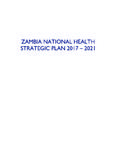Transcription of THE ADVERSE CHILDHOOD EXPERIENCES (ACES) …
1 THE ADVERSE CHILDHOOD EXPERIENCES ( aces ) survey TOOLKIT FOR PROVIDERSTABLE OF CONTENTSINTRODUCTION TO THE TOOLKIT 3 ACE survey ADMINISTRATION: SAMPLE PROTOCOL 7 TOP 20 TIPS FOR ADMINISTERING THE ACE survey IN YOUR AGENCY 16 CASE STUDIES OF CRITTENTON AGENCIES 22 TESTIMONIALS 28 KEY RESOURCES ON ADVERSE CHILDHOOD EXPERIENCES ( aces ) 32We d like to thank ASCEND at the Aspen Institute for their partnership in making this toolkit possible INTRODUCTION TO THE TOOLkIT | 3 THE aces TOOLKIT FOR PROVIDERSTHE CHALLENGES FOR GIRLS AND YOUNG WOMEN After more than a century, TNCF and its family of agencies continue to address many of the same challenges facing girls and young women that inspired its co-founders, Charles N.
2 Crittenton and Dr. kate Waller Barrett, into action in the late 1800 s. This includes an ongoing focus on girls and young women who were: Struggling to leave forced prostitution, Caught in violent marriages or relationships, and Single mothers and pregnant and parenting , not much has changed since TNCF was founded 132 years ago; the silent epidemic of violence against marginalized girls and young women rages on in this land of aces ?TNCF believes that the ACE survey is a valuable tool that harnesses the power of data to foster social change. ACE data can increase awareness about the breadth and impact of exposure to CHILDHOOD adversity and the resulting complex trauma.
3 Combined with brain research and the science of epigenetics, we now know more than ever the damage that traumatic and ADVERSE CHILDHOOD EXPERIENCES can cause. TNCF shares the struggle that many face to define the depths of the challenges and the invisibility of marginalized girls and young women and believes that ACE brings these challenges to life through a simple ten item , we also know about young women s capacity for healing and the power of resilience. We believe that the key to INTRODUCTION TO THE TOOLkITAbout The national Crittenton FoundationFounded in 1883, The national Crittenton Foundation (TNCF) is the umbrella organization for the 26 members of the Crittenton family of agencies that provide services in 32 states and the District of Columbia.
4 TNCF s mission is to advance the self-empowerment, health, economic security and civic engagement of girls and young women impacted by violence and adversity. TNCF leads Crittenton s national advocacy efforts, provides capacity building support to Crittenton agencies and operates a survivor directed social support and social capital building program called BOLD (Bridging Opportunity, Love and Determination). TNCF also co-directs the national Girls Initiative of the Office of Juvenile Justice and Delinquency Prevention. INTRODUCTION TO THE TOOLkIT | 4 THE aces TOOLKIT FOR PROVIDERS accessing the resources needed to promote the potential of this very marginalized population is our ability to define them in terms that can be understood by a broad cross section of audiences from family members, clinicians, the public, and policy makers, to the young women themselves.
5 To this end, we share our experience with others, imperfect as it is, with the hope that it will encourage others to continue this journey with ADMINISTRATION OF THE ACE survey : THE RELATIONSHIP TO WELL-BEINGS ince the 2012 survey , working closing with Crittenton agencies, we have fine-tuned our approach to the administration of ACE survey . We have a clear articulation of the reasons for administering the survey , a protocol to guide agency use of the aces (including staff training), and the basis for beginning to gather data on the relationship between ACE scores and well-being domains.
6 With the help of Dr. Roy Wade at the Children s Hospital of Philadelphia, a leading ACE researcher, we have had the opportunity in the current administration for agencies to enter the data directly into a centralized electronic database that does real time analysis to inform our work. Additionally, a subset of participating agencies administered questions in the well-being domains of connection, coping and stress. The well-being data allows TNCF to begin looking at the relationship between ACE scores and well-being our next phase of this work, we will further explore the specific interventions that help build social and emotional well-being, which can be powerful buffers against the impact of ADVERSE CHILDHOOD EXPERIENCES .
7 Additionally, we will develop an ACE-based youth informed survey through qualitative research with girls and young women in Crittenton agencies. TNCF and its family of agencies will then administer this new youth-informed survey , which will include a more comprehensive array of well-being domain on the Crittenton ACE SurveyIn 2012, TNCF coordinated a pilot to administer the ADVERSE CHILDHOOD EXPERIENCES survey to more than 1,350 males and females who were receiving a diverse array of services and supports from 18 participating Crittenton agencies. Dr. Vincent Felitti, co-principal investigator of the original ACE Study, provided advice to us throughout this process.
8 The interest in using the ACE survey grew out of a frustration with agencies inability to adequately convey to other service providers, funders, policy makers and others the depth of the complex trauma that many of the girls and young women in our agencies have experienced, particularly young mothers and their children. We were excited about the potential of the simple survey to tell us more about the CHILDHOOD adversity and resulting trauma experienced by those young people supported by Crittenton results of the first administration of the ACE survey confirmed that the scores of the girls and young women we support are unusually high.
9 In particular, TNCF found that: 53% of all girls and 61% of the young mothers had ACE scores of 4 or more, as compared to 15% in the original ACE study; 82% of young mothers in residential treatment also had ACE scores of 4 or more; and 74% of the young mothers in the juvenile justice system had ACE scores of 4 or findings reinforced what Crittenton agencies have known for many years: that unaddressed CHILDHOOD trauma resulting from exposure to abuse, neglect and household dysfunction results in coping behaviors such as running away, violent behaviors, self harm, drug and alcohol abuse, etc.
10 These behaviors drive many of the young people we support into the juvenile justice, child welfare, or mental health the results in such stark terms deepened our resolve to advocate for the use of gender and culturally responsive, trauma-informed and developmentally appropriate services and supports young women need support to heal from trauma. It also underscored the absolute necessity for a two- or multi-generational approach to creating opportunities for young women to break the cycle of abuse, neglect, violence, poverty and oppression for their children.







